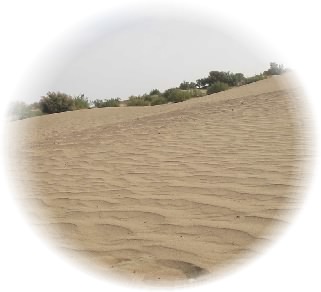 |
|
 |
A vast arid desert extends throughout the central area of the Eurasian continent. Although the land of this region seems barren, it has been occupied by various groups of people for more than 3000 years. This region has been an important trade route between the East and the West, and also a major route for traffic between northern nomadic and southern agricultural cultures. In this arid region, water is available in places called oases that provide subsistence for the local people at present as well as in ancient times. |
| The Oasis Project is a research project aiming at reconstructing the history of the interaction between people and natue for the last 2000 years in an arid region of China. The project adopts a trans-disciplinary approach, integrating various studies including history, archeology, ethnology, economics, hydrology, meteorology, glaciology, biology, and agriculture. In this way, we may learn something important that can increase the capabilities of oasis regions over the long term. |
 |
 |
Water shortages have recently become a big issue in this region. Shortages force the local people to move and change their traditional life-style. Impacts force from human activities including overuse of agricultural water, over grazing, and climate change (e.g. global warming) could have caused the water shortage, but exact reason is still unknown. It is important to elucidate the causes and to maintain adequate water resources in the region. For future capability, however, it is more important to consider the basic questions; who pocesses the water, and why water is to be used by people. |
|
|
 |
[Oasis Home]